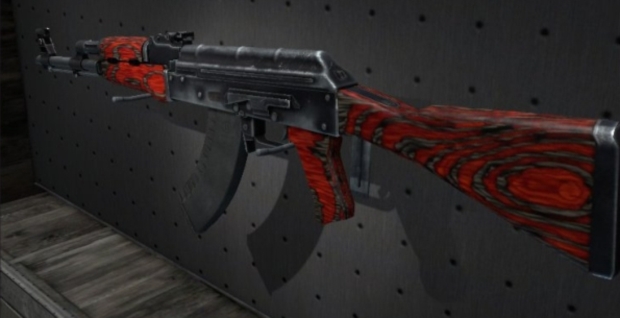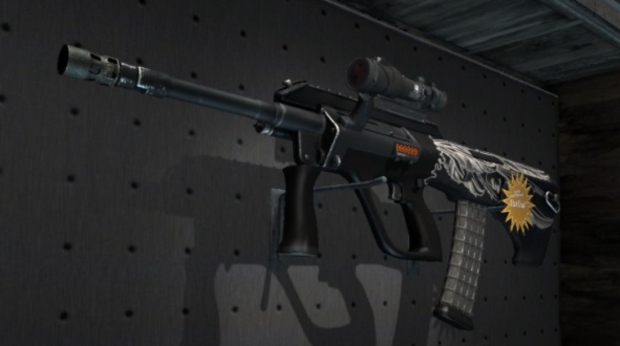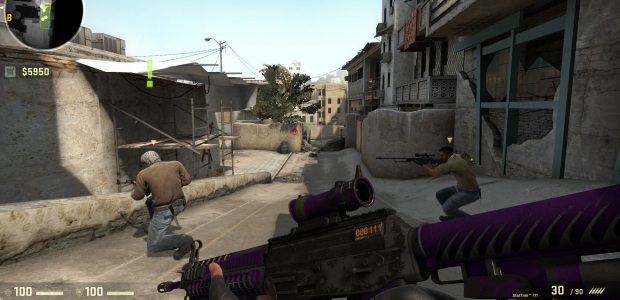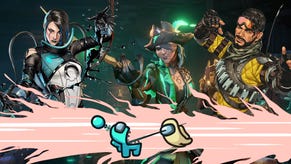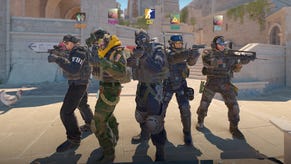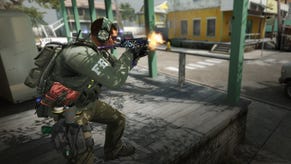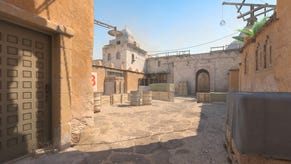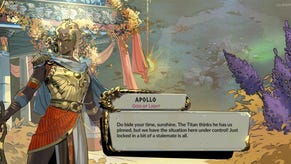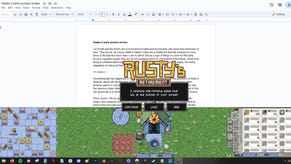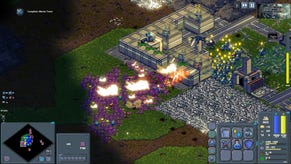Playing With Firearms In Counter-Strike: Global Offensive
Russian Roulette
I have sniped a Terrorist across the full length of A-Long. I've hidden behind the squeaky door on Nuke, unmoving, for almost two minutes before scoring an ace with a P90. I've won and lost last-minute nailbiters. But until the most recent Dreamhack tournament I'd never staked an AK-47 on a match before – and I'd never really got under the surface of Counter-Strike: Global Offensive.
Hit the jump to commit to a competitive game
Counter-Strike: Global Offensive is a fantastic experience, but like anything it goes to another level when you have friends playing it – both for the matches themselves, and the out-of-game stuff like weapon trading. Dreamhack Winter 2013 was around a fortnight ago in the Swedish city of Jönköping – so one of the best-ever Counter-Strike teams, Ninjas in Pyjamas, was playing at 'home'. As well as that, a few of my CS buddies are Swedish (big friendly hugs!). So you bet it was a big thing, but there was another reason.
Valve are devilishly good at adding value to their games over time, and hooking in the hardcore with extra-special treats. So it is with CS:GO. Since the game's release there have been map packs, weapon sets, and this Dreamhack saw the advent of a new type of cross-promotional frenzy: drops for watching the games live on Twitch.
In theory it's simple. You link your Steam account to your Twitch account, watch the games, and during the matches a random selection of viewers get a special item – but not everyone. The drop rate was proportional to the audience on a given stream, but I'd guesstimate your chances were about 1 in 50. That may be wrong (it probably is) but the point is they weren't great unless you watched loads of Twitch. As bait-and-switches go, it's a good one – and also led to a constant stream of dolts in chat typing '!drop!' thanks to clever trolls.
In the bait-and-switch aspect, this was a classic Valve move. You can hardly resent free stuff, after all, and such is the reasoning behind those detestably desirable crates in CS: GO itself. It's a balance so few developers seem able to hit, between cosmetic and investment, but one almost uniformly perfect across every recent Valve game. You don't have to buy keys to unlock the crates, unless you want to unlock the crates. And yes dear reader, you bet I've put down money and prayed to Saint Gabe many a time. For all the good it does, because even science is not enough to warn me off such cravings.
The point is that this Dreamhack promotion, in the context of everything else Valve do with Counter-Strike, slots into some vulnerable part of any CS: GO player's brain. Drops? There are going to be drops? It's two days away but already I'm thinking about how to drop out of other commitments and ooh a drop would be nice wouldn't it. It makes you think about guns a lot.
It was in this frenzied state that my friends introduced me to csgolounge.com and the world changed. The CSGO Lounge is somewhere players gather together and trade weapons, but not only that – it also allows you to bet on the outcome of professional Counter-Strike matches using guns. These bets are organised through a fleet of bots that pop up, whisk away your 'stake', and then if you win turn up again to drop off the sweaty loot.
You link your Steam account, choose the team you want to back in a given match – like the Dreamhack final – and are queued up to 'trade'. Anything from a few seconds to a few minutes later a bot'll pop up and ask to trade (along with a security code you can check), you whack in up to four items, and that's that. I've no idea how the odds are determined, but there are odds, and you can't withdraw bets but can change the team you're backing up until the match starts. If they come up trumps, a fleet of bots await to return your stake and all the lovely winnings. At first sight it was love; this is the future that science promised me.
It is also, incidentally, proof positive of why an open API like Steamworks is so important. It's easy to call Steamworks 'a good thing', but this and the similar Dota 2 lounge are examples of the kinds of services that it makes possible – and CSGO Lounge is most definitely, despite the odd thread about scammers, a service to the players. It also has a button labelled 'infinity scrolling' at the bottom of its first page, and I've just wasted another 20 minutes looking at a StatTrak USP-S which vaguely resembles something Big Boss might use.
As I'm writing this there's a tab open so I can listen in on a Universal Soldiers match (come on boys!), but Dreamhack was my first time. Over the course of the tournament I'd lucked into two Gabendrops, and the final match was Ninjas in Pyjamas (NiP) Vs Fnatic. Everyone else seemed to be backing NiP (a Swedish TV documentary about whom can be watched here with English subtitles), so the odds were a crazy 6 to 1 on Fnatic. I put the house on them. Incidentally, this match was the culmination of a tournament with a mammoth $250,000 prize pool, funded by Valve through the sale of those CS: GO crate keys, and over 140,000 people saw it live. It was the first time CS: GO has, albeit briefly, toppled LoL from the most-watched throne.
First up was Dust II, Global Offensive's rejuvenating take on one of (perhaps the) greatest ever multiplayer maps. It's the daddy. Nearly all of CS: GO's maps theoretically favour the Terrorists (Ts) or Counter-Terrorists (CTs), and Dust II is T-sided, but the half-time changeover always balances things out overall. It's an interesting counterweight to the usual mantra of symmetry when discussing FPS multiplayer design, but I digress. What you learn from watching the pros is how much asymmetry matters, because at the amateur level, theories are often just that.
In this match on Dust II, Fnatic playing as CTs started terribly and NiP took a huge lead. But even as the score climbed, from 9-3 to 10-3 to 11-3 and onwards, the commentators remained remarkably blasé about the situation. It seemed no big deal that the CTs were haemorrhaging rounds, but my head was down and those beautiful guns were bound for the abyss. Then to my unbelieving amazement, the theory played out in practice.
In the second half Fnatic made up the deficit as Ts in no time, suddenly outfoxing and outnumbering NiP in key positions. Soon enough it was 13-13, and the round that levelled it showed the kind of captain's intervention you almost never see outside of professional play. After poking around a little, Fnatic's Pronax ordered his team to suddenly punch through the weakly-defended Mid doors (usually a deathtrap). Their positions suddenly isolated, NiP were in disarray and then dead. With the wind in their sails, and players like Flusha sinking headshot after headshot, Fnatic took Dust II 16-14 and the underdogs were 1-0 in a best of three.
I won't give a blow-by-blow of the last two matches, both of which were full of amazing plays although rather one-sided. But a theme that ran right through this final was that intersection of theory and execution – and how a special piece of individual skill can, just sometimes, snatch a win from defeat's jaws.
There's something in this that gets to the heart of Counter-Strike's appeal, something consistent over time and its three main versions – the 1.6 version of the original mod, CS: Source, and CS: Global Offensive. In other FPS maps you memorise routes and chokepoints – or I do, at least – and learn good places to camp and nice sightlines.
That's part of Counter-Strike too, of course. But with a map like Dust II, I could never see it again and I'd be able to tell you everything not only about where stuff is but also about how players will move through it – where and when they'll enter areas during the first 30 seconds, whereabouts to shoot blind when rushing B, the best routes to take during any sudden rotations. I know every object's placement and height in every part of the map simply through repetition, and on top of that I know where players appear like clockwork. This kind of intimate or granular knowledge is by no means exceptional; I'm a below-average Counter-Strike player, and that's fact not false modesty.
Perhaps this kind of familiarity is simply a symptom of the game's longevity – after all, you could have been playing Counter-Strike for fifteen-odd years by now. But it's also at the soul of the experience. The matches are a kind of mental game around a location that all 10 players know incredibly well, matched up to an unforgiving test of precision skill. The ultimate thrill in CS: GO comes from predicting other player's movements correctly, and ambushing them before they even know you're around – there's nothing like it. You weren't just a good shot; you played smarter. You knew.
This thread runs right through Counter-Strike, whichever version you're talking about. On that topic, the community seems to have taken CS: GO to its bosom, though of course there are those who swear blind by 1.6 and even Source. It is interesting, however, that many of 1.6's most vocal supporters seem to regard it as some fixed and perfect creation rather than the product of continual iteration and tweaking by different hands over many years. This is the route CS: GO is heading and, with Valve's long-term support guaranteed, that's certainly where the competitive future for the series lies.
After that Dreamhack final I went straight to the CSGO Lounge. My winnings seemed grand indeed, a panoply of freshly-painted firepower, and after a minute or two the bot popped up to oblige me. Some StatTraks, a couple of finishes I hadn't seen before, and one happy Counter-Striker.
Praise be to Fnatic, but we all know it would be wrong to talk about gambling without a cautionary note. I got hooked. I've been betting all of my guns on CSGO Lounge, today and yesterday and the day before that. Because of that rush Fnatic gave me, I bet on them big in the ESEA and lost almost all of my StatTraks and Souvenir guns.
I've already placed a few bets in advance for today. All I want is a couple AKs and maybe a Glock because it'll get the use and then I'll stop, I swear. Is that so crazy? I like looking at the paint jobs and I'm wondering whether I should pay Gabe for a nametag to really make them mine and... ah. You caught me. I don't think about CS: GO's gun cosmetics all the time, or gambling with virtual weaponry. Honest. It's only really when I'm not playing CS: GO.


